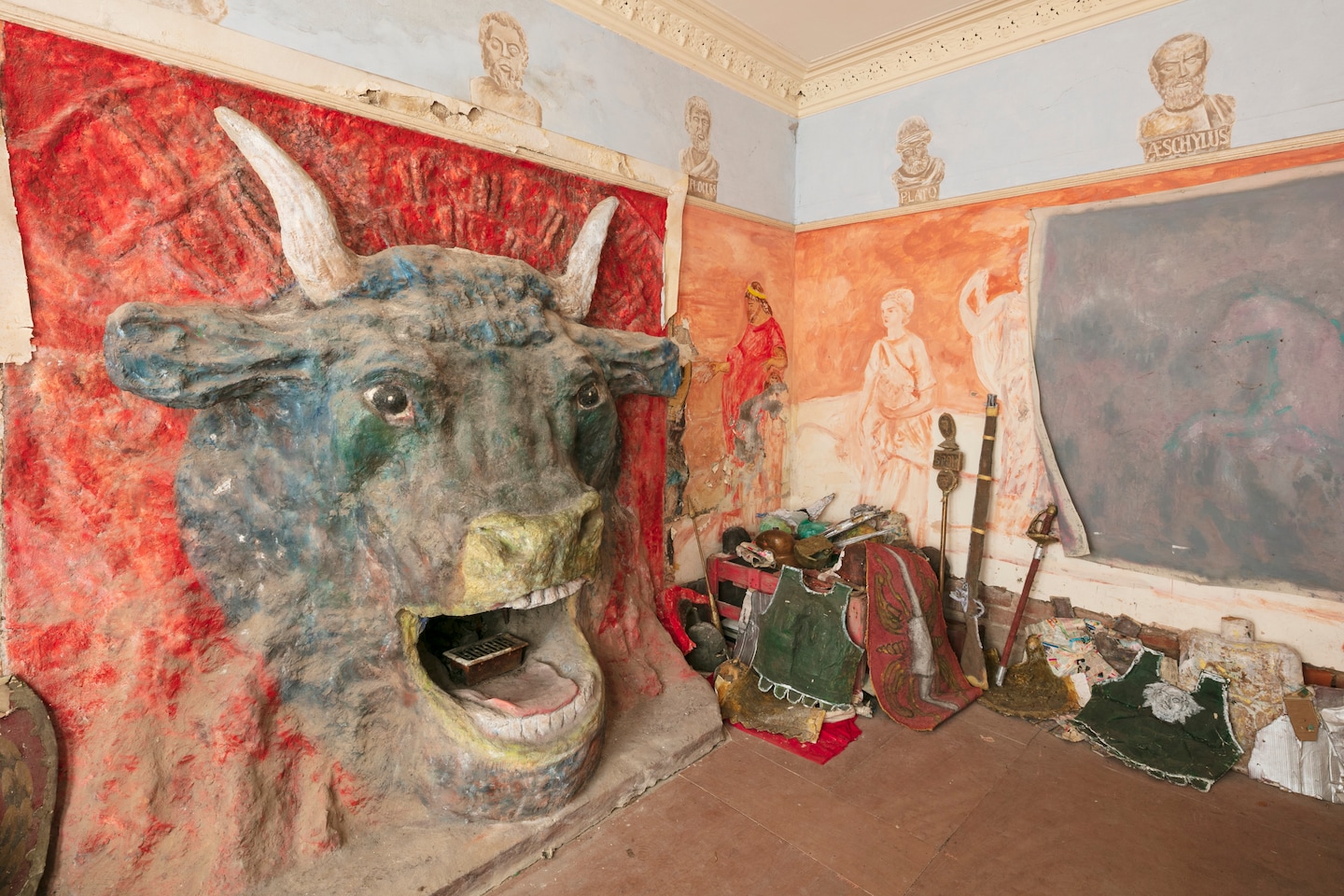British government considers man’s art-filled apartment a historic site

Jones and his family knew Ron Gittins as an eccentric and reclusive artist. But they didn’t realize until shortly after his death in 2019 at the age of 79 that he had carved, sculpted and painted his passion on the walls of his rented flat in Birkenhead, a north-west riverside town from England where he lived alone.
It couldn’t stay, Gittins’ owner had said. But Jones knew she wanted to preserve the scene.
“I was just like, ‘We can’t let this go,'” she told the Washington Post.
For years, Gittins’ family worked to protect his life’s fanciful work, insisting that the apartment, “Ron’s Place,” was an irreplaceable art installation worthy of preservation. This month, the British government agreed. Historic England, a national body that designates historically significant sites in England, added Ron’s Place to its national heritage list, the family announced in early April.
The designation, which prohibits an owner from making changes to Ron’s Place without government consent, places Gittins’ apartment among medieval churches and Victorian villas that usually receive such recognition in the country, ensuring a legacy improbable to the creation of Gittins. The apartment has received a Grade II listing, which is awarded to “particularly significant buildings of more than special interest”, according to Historic England.
“It was Ron, who led a very small private life,” said Paul Kelly, a board member of the Wirral Arts and Culture Community Land Trust, an organization set up to manage Ron’s Place. “Suddenly he was recognized as having done something interesting on this scale. …What an extraordinary thing.
Gittins, a freelance artist and theater performer, was something of an outcast within his family, his niece Jan Williams wrote to the Post. He showed up to meetings in flamboyant outfits and spoke in codes, joking that he was a secret agent. He was known in Birkenhead as the local eccentric who sometimes strutted around town dressed as a Roman centurion.
He was, according to Williams, “colorful, larger than life, loud, opinionated, argumentative but affectionate.”
Gittins kept his family at a distance. He only let a few people into his apartment, which his rental contract allowed him to decorate “to his taste,” according to the Ron’s Place website.
Walking into Gittins’ house after his death was like finally experiencing the world he inhabited, Williams said. The lion’s head shone with eyes made of shards of glass, and a frying pan rested in its mouth. Smaller models were scattered around the apartment, like an Egyptian sarcophagus that opened to reveal a model of a mummy. While sorting through Gittins’ belongings, Williams found a postcard he had written to her, saying he couldn’t wait to show her his creations.
“Ron had created a fantasy world for his own enjoyment,” Williams said. “A sort of setting where he played the leading role. »
Williams, herself an artist and photographer, led the effort to save Gittins’ apartment. She first arranged to continue renting the apartment from its landlord, raising money to cover the costs and creating a community organization to manage the space. Support poured in from singers, authors and sculptors who visited Ron’s Place at the family’s invitation. They published an article in the Guardian and a BBC video.
In November 2022, the building that housed Ron’s Place was put up for auction. Buyers circled and Williams scrambled to raise the hundreds of thousands of dollars they needed to win a bidding war. It ended in a “fairy tale-style” miracle, Williams said: On March 1, 2023, the last day of the auction, a donor sent an email with an offer to lend to the organization from Williams most of the money she needed to purchase the building for about $400,000. . The donor told Williams she had heard about Ron’s Place that morning, while reading the newspaper during her commute.
“It felt like it was meant to be,” Williams said.
In a Hail Mary attempt to delay the sale, Williams had also asked Historic England to list Ron’s Place as historically significant. This was far from the case: this designation is normally given to churches, inns and mansions with more centuries of history than Gittins’ apartment.
Historic England, however, heeded his request, even after Williams and the land trust obtained ownership of Ron’s Place. When Sarah Charlesworth, an assessor at Historic England, visited the apartment later that year, she immediately noticed the same floor-to-ceiling lion statue that had greeted Williams and Jones years earlier.
“I actually thought, ‘This is a slam dunk,’ as soon as I got there,” Charlesworth said.
Ron’s Place seemed to him to be a striking example of “outsider art”: works of art created by people with no formal artistic training and no intention of being exhibited or sold. It was, according to Charlesworth, a facet of British history every bit as worthy of preservation as its churches and castles.
“The list is not just about stately homes and chocolate box cottages,” she said. “It’s about being representative and inclusive and making sure we represent all aspects of the nation’s history.”
The apartment is closed to visitors as it is under repair. Wirral Arts and Culture Community Land Trust board members Williams and Kelly said the organization had plans after acquiring the entire building housing Ron’s Place, which also includes a garden and three apartments at the ‘floor. They hope to preserve Gittins’ works on the ground floor as a museum and art space and renovate the other apartments into low-cost housing for artists.
It’s an unlikely legacy for Gittins after devoting much of his life to the secret world of his apartment, Kelly said. But he thinks Gittins would be happy to see others notice.
“Ron was a complete stranger,” Kelly said. “But… it was recognition for his work. He would love that.
washingtonpost





